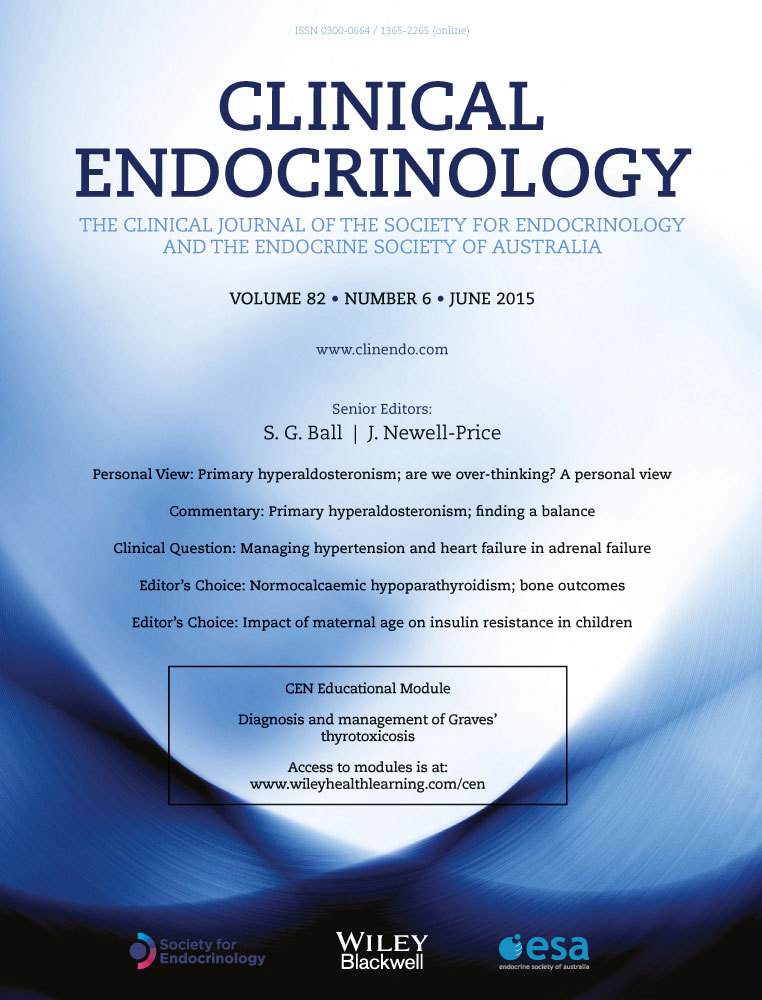Associations of coefficient of variation of serum GH with previous radiotherapy, hypopituitarism and cardiac disease in patients with treated acromegaly
Summary
Background
Cardiovascular complications represent the biggest cause of mortality in acromegaly. It is therefore important to optimally stratify acromegalic patients according to disease activity and complication risk. GH is secreted in a pulsatile manner from the pituitary gland, but GH pulsatility is not routinely assessed clinically. The coefficient of variation of serum GH (GHCV) during oral glucose tolerance test (OGTT) quantifies the variation of GH secretion in patients with acromegaly, but has not been reported previously.
Aim
To investigate whether GHCV during OGTT is associated with clinical parameters predicted to relate with hypothalamo-pituitary dysfunction during acromegaly, such as radiotherapy treatment, pituitary deficiency and cardiac disease.
Methods
GHCV was calculated during 584 OGTTs and compared with nadir serum GH and IGF-1 in 111 acromegalic patients treated at a single centre.
Results
Acromegalic patients treated with radiotherapy had a 37% lower level of GHCV when compared to the nonradiotherapy group (mean GHCV: 0·298 ± 0·015, no radiotherapy; 0·189 ± 0·007, radiotherapy; P < 0·001). Neither serum IGF-1 nor nadir GH was significantly altered in the radiotherapy group. Mean GHCV was 50% lower in the acromegalic patients with cardiac failure when compared to acromegalic patients with normal echocardiogram (0·161 ± 0·034 vs 0·297 ± 0·055; P < 0·05). Neither serum IGF-1 nor nadir GH was significantly altered during cardiac failure.
Conclusion
Our preliminary data suggest that GHCV during OGTT may be reduced during acromegaly in patients with previous radiotherapy, pituitary deficiencies and cardiac disease. Larger studies are required to determine whether GHCV could provide help to assess the morbidity status of patients with treated acromegaly.




